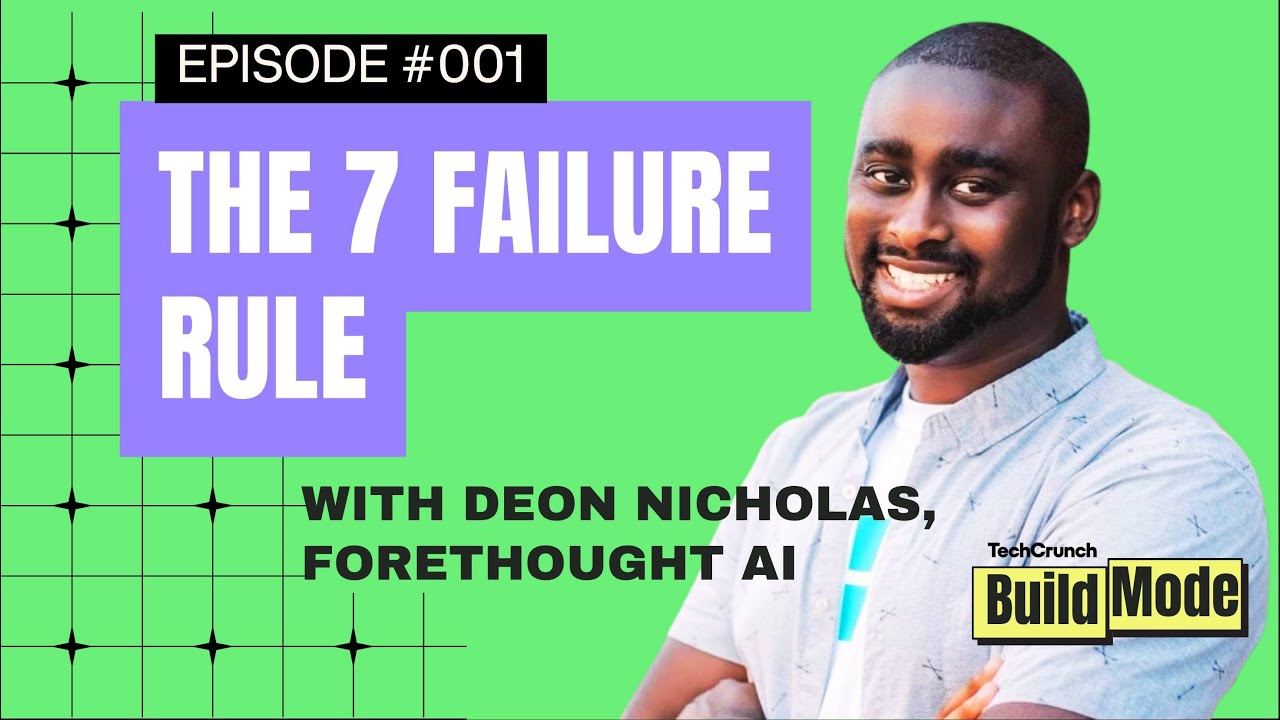
For many aspiring entrepreneurs, securing that initial seed capital—the first million dollars—feels like the ultimate validation, a hard-won victory signifying the launch of their vision. However, a growing consensus among seasoned founders and venture capitalists suggests that this early triumph should merely be a prelude to a much broader, meticulously planned financial strategy. Instead of viewing a quarter-billion-dollar Series D round as a distant, abstract goal, industry leaders advocate for founders to integrate this long-term funding roadmap into their strategic planning from the very inception of their ventures.
The Evolving Landscape of Startup Capital
The journey of a startup, from a nascent idea to a market-leading enterprise, is typically punctuated by distinct fundraising stages, each designed to fuel specific growth milestones. This progression usually begins with pre-seed and seed rounds, providing initial capital for product development and market validation. Subsequent Series A, B, and C rounds scale operations, expand market reach, and accelerate growth. Beyond these, late-stage rounds—often Series D, E, and beyond—are critical for companies seeking to achieve massive scale, enter new markets, or prepare for public offerings or acquisitions. These later stages often involve significantly larger sums, sometimes hundreds of millions or even billions of dollars, and attract a different breed of institutional investors, including growth equity funds, mutual funds, and even sovereign wealth funds.
Historically, early-stage founders were often encouraged to focus solely on their immediate funding needs, prioritizing product-market fit and customer acquisition above all else. The prevailing wisdom suggested that future funding would naturally follow a successful early trajectory. However, the sheer competitiveness of the modern venture capital landscape, coupled with the increasing scale and ambition of startups, has necessitated a more sophisticated approach. The "build it and they will come" mentality, while still holding some truth for product development, no longer fully applies to fundraising. Today’s founders must also be adept financial architects, charting a course that anticipates future capital requirements and builds relationships with potential investors years in advance.
Beyond the Seed Round: A Strategic Imperative
Sadi Khan, co-founder and CEO of Aven, a company providing asset-backed credit cards to consumers, underscored this crucial perspective during a recent industry event. He emphasized that founders must begin contemplating their subsequent funding rounds long before they even secure their initial financing. This foresight enables a clear understanding of the total capital likely needed throughout the company’s entire growth trajectory, not just for the next 12-18 months. Khan’s own company, being inherently capital-intensive, necessitates a robust and continuous funding pipeline. "We require large amounts of capital to scale up, and we’ll require large, large amounts of capital to grow," Khan noted. "From day zero, we knew that we needed to have an intensive pipeline of investors that we want to work with over a long period of time."
This proactive approach allows founders to not only identify suitable early-stage investors but also simultaneously cultivate relationships with potential later-stage partners who align with the company’s long-term vision. This isn’t about asking for money prematurely; it’s about initiating a dialogue and fostering familiarity.
The Value of Early Cultivation: Building Bridges to Future Capital
The benefits of early engagement with late-stage investors extend beyond mere networking. Lila Preston, who leads growth equity investments at Generation Investment Management, advises startups to begin forging these crucial relationships at least two years prior to when they anticipate needing the capital. This extended timeline offers several strategic advantages.
Firstly, it provides potential investors ample opportunity to thoroughly understand the business model, the intricacies of the market it operates within, and the competitive landscape. This deep dive allows them to conduct their due diligence over time, observing the company’s progress and validating its assumptions organically. Secondly, it offers investors a unique "peek into the company’s growth" journey, witnessing firsthand how the team executes against its stated milestones and adapts to market dynamics. This longitudinal view builds trust and conviction, which are invaluable assets when a formal fundraising round commences.
Furthermore, some established late-stage investors, like Generation Investment Management, possess the expertise and resources to offer substantial value to promising companies long before any capital changes hands. This could manifest as strategic advice, introductions to key industry contacts, or even market insights. As Preston explained, "When we show up, even at Series A or B, we’ve done the homework so that we’re an additive worthwhile conversation." This early engagement transforms a potential investor into a strategic ally, someone who understands the company’s journey and can help shape its future. When the time comes for a larger investment, these established relationships mean less time spent on introductory pitches and more on discussing strategic growth, milestones, and shared visions for success.
Understanding Investor Psychology and Due Diligence
Zeya Yang, a partner at IVP, a prominent growth-stage venture capital firm, echoes the sentiment regarding early engagement, highlighting the accelerating pace of late-stage funding rounds. In today’s dynamic market, large rounds can close with surprising speed, leaving little time for investors to get acquainted with new companies. Having pre-existing relationships significantly streamlines the process. "It definitely helps to get to know those people earlier than you think you need to," Yang stated. This allows founders to engage with individuals they already have a rapport with, who have already dedicated thought to their business, making the actual fundraising discussions more efficient and productive.
During these initial, informal interactions, companies aren’t expected to reveal sensitive financial metrics or proprietary data. Instead, the focus should be on articulating the overarching vision, the general direction of the company, and the broader impact it aims to achieve. This narrative-driven approach helps potential investors grasp the long-term potential and cultural fit, laying the groundwork for more detailed discussions later. It’s an opportunity to sell the dream, not just the current numbers, building a compelling story that resonates with investors looking for transformative opportunities.
Navigating the Capital-Intensive Journey
For companies like Aven, which operate in capital-intensive sectors such as fintech or hardware, the need for continuous, substantial funding is particularly acute. These ventures often require significant upfront investment in infrastructure, technology, or balance sheet assets before they can generate meaningful revenue. Without a meticulously planned funding strategy, they risk hitting a "capital wall," where growth stalls due to insufficient financial resources.
The proactive approach mitigates this risk by ensuring a steady flow of capital aligns with projected operational scaling. It forces founders to think critically about unit economics, cash burn rates, and future valuation milestones from the outset. This strategic discipline is not just about securing money; it’s about ensuring the business model is inherently sustainable and attractive to the right type of growth capital. Companies that can articulate a clear path to profitability and demonstrate judicious use of capital, even at early stages, are far more appealing to later-stage investors.
Leveraging Your Existing Network for Future Growth
A crucial starting point for identifying and connecting with potential late-stage investors lies within a startup’s existing network, particularly its current cap table. Early-stage investors, often well-connected within the venture capital ecosystem, can serve as invaluable conduits. They frequently have relationships with a wide array of VCs, including those specializing in later-stage rounds, and can provide warm introductions to firms that would be a good fit or have a history of successful co-investments.
Khan’s own experience exemplifies this strategy; his early investors facilitated introductions to firms like Khosla Ventures, which ultimately led Aven’s Series E round. This highlights the synergistic nature of venture capital: investors often prefer to co-invest with trusted partners, and a strong existing investor base can act as a powerful endorsement. "At any given stage of fundraising, we always thought about what the next set of investors would be," Khan revealed. This iterative process often involves strategically bringing in "symbolic checks" from investors who primarily focus on the next funding stage. This allows them to get a foothold, observe the company’s progress, and build a relationship, positioning them as a natural lead investor for future, larger rounds.
The Broader Impact: Sustaining Innovation and Economic Momentum
The strategic cultivation of capital has far-reaching implications beyond individual startups. A robust and predictable funding pipeline fuels innovation, enabling companies to take bigger risks, develop groundbreaking technologies, and disrupt established industries. This sustained access to capital allows promising ventures to mature, create jobs, and contribute significantly to economic growth.
The cultural shift among founders to adopt a long-term financial perspective transforms them from mere product visionaries into holistic business leaders capable of navigating complex capital markets. This evolution is vital in an era where startups are increasingly expected to achieve "unicorn" status—a valuation of $1 billion or more—and to do so rapidly. Such ambitious goals necessitate not just brilliant ideas and strong execution, but also a sophisticated understanding of financial strategy and investor relations. By thinking several rounds ahead, founders are not just securing their next check; they are building the foundation for enduring companies that can drive significant market and social impact.
Conclusion: The Long-Term Vision for Funding
In essence, the message from experienced founders and venture capitalists is clear: fundraising is not a series of isolated events, but a continuous, integrated process. By adopting a "day zero" mentality towards future funding rounds, entrepreneurs can build stronger relationships with investors, ensure a smoother capital flow, and ultimately enhance their chances of achieving their most ambitious growth objectives. This proactive, strategic approach to capital cultivation is no longer a luxury but a fundamental requirement for success in the competitive and rapidly evolving world of high-growth startups. It’s about playing the long game, not just winning the next sprint.





